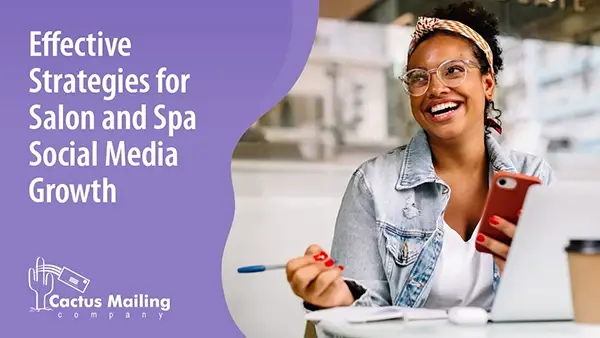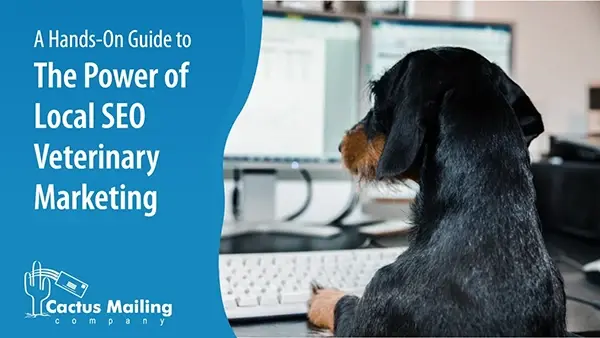We Are Here to Help!
Get pricing details and strategies that will work for your business.
If you're an insurance agent or marketer, you know how important it is to stay ahead of the competition. One of the best ways to do that is by leveraging social media for insurance marketing. Social media channels and platforms offer a unique opportunity to engage with potential clients, build brand awareness, and position yourself as an industry thought leader.
But with so many social media platforms and strategies, it can be overwhelming to know where to start. In this article, we'll explore the basics of social media in insurance marketing, including how to understand the different platforms and how to create compelling content. We'll also dive into strategies for more leads, engaging potential clients, leveraging various social media platforms, and measuring success and ROI.
By the end of this article, you'll understand how social media can benefit your insurance marketing efforts and how to create a successful social media strategy that drives results. So, let's start with the basics of social media in insurance marketing.
Key Takeaways
- Social media is a powerful tool for insurance agents and marketers to engage with potential clients and build brand awareness.
- Understanding the different social media platforms and creating effective content are key to a successful social media strategy.
- Strategies for engaging potential clients, leveraging social media platform, and measuring success and ROI are essential for driving results in social media marketing.
Understanding Social Media in Insurance Marketing
Insurance companies utilize social media to connect with their target audience and promote their products and services. This section will examine the role of social media platforms in insurance marketing and how establishing a solid social media presence can help insurance providers build trust with customers.

The Role of Social Media Platforms
Social media platforms such as Facebook, X (Twitter), LinkedIn, and Instagram provide insurance companies with a powerful way to reach their target market audience. Insurance companies can increase their brand awareness and attract potential customers by creating engaging social media posts and sharing online.
A social media profile also allows an insurance agency to interact with its customers and respond to their queries and concerns. By engaging with your audience on a social platform, you can build a loyal following and establish your brand as a trusted authority in the insurance industry.
Building Trust Through Social Media Presence
Building trust is a crucial component of any insurance marketing strategy. Social media can help insurance companies build customer trust by providing valuable information and insights. By sharing informative content such as blog posts, infographics, and videos, an insurance company can position itself as a thought leader in the industry, all while taking advantage of social selling through its different channels.
An insurance agent can also use social media to showcase their expertise and experience. By sharing case studies, online reviews, and success stories, insurance agents and companies can demonstrate their ability to provide high-quality services and solutions to their customers.
Strategies for Engaging Potential Clients
Engaging potential clients is crucial when it comes to social media marketing strategy for insurance. Here are some techniques to create engaging content and reach your insurance agencies' target audience using a social media account.
Content Creation for Engagement
Creating valuable and engaging content is key to attracting potential clients. Your content should be informative, relevant, and visually appealing. Use eye-catching images, infographics, and videos to make your content stand out. Avoid using technical jargon that might confuse your audience, and ensure your content is easy to read and understand.

Utilizing Stories and Testimonials
Sharing stories and testimonials from satisfied clients is a powerful way to build trust and credibility with potential clients. Use your social media channel to share success stories and testimonials and encourage your clients to share their experiences with your business.
Targeting the Right Audience
Targeting the right audience is crucial to the success of your social media marketing campaign as it helps create content that resonates with your audience and drives engagement. Use social media analytics to identify your target audience and tailor your content to their interests and needs.
Crafting Effective Social Ads
Social ads can be a powerful tool for reaching potential clients and generating leads. Make sure your messaging is clear and concise when crafting social media posts. Use eye-catching images and videos to grab your audience's attention, and include a clear call-to-action in your social selling that encourages them to take the next step.
Leveraging Different Social Media Platforms
It's important to understand the strengths and weaknesses of each platform. Leveraging different social media platforms can help insurance companies increase their visibility, connect with their audience, and stay on top of industry trends. Here are some popular social media platforms to meet unique consumer needs and specific marketing goals.
Instagram and Facebook for Visuals
Instagram and Facebook are great platforms for sharing visually appealing content. Insurance companies can use these platforms to share images and videos of their products, services, and satisfied customers. They can also use these platforms to showcase their company culture and values.
Using high-quality images and videos is essential to make the most of Instagram and Facebook. You can also use hashtags to increase your reach and engage your audience. Additionally, you can use Instagram and Facebook ads to target specific demographics and increase your visibility.

LinkedIn for Professional Networking
LinkedIn is a professional networking platform that can be leveraged for insurance marketing. An insurance agent can use LinkedIn to connect with other professionals in the industry, share thought leadership content, and recruit new employees.
To make the most of LinkedIn, optimizing your company page and posting regularly is important. You can also join LinkedIn groups related to the insurance industry to connect with other professionals and share your expertise.
Twitter for Quick Updates and Trends
Twitter is an excellent platform for sharing quick updates and staying on top of industry trends. Insurance companies can use Twitter to share news and updates about their products and services and engage with their audience in real time.
To make the most of Twitter, it's essential to use hashtags and engage with your audience regularly. You can also use Twitter to monitor industry trends and stay up-to-date on the latest news and developments.
Content Ideas
When it comes to social media for insurance marketing, creating engaging content can be challenging. However, with some creativity and planning, you can develop content that resonates with your audience and drives engagement. Here are some content ideas to inspire you:
Educational Series
Developing an educational series is one way to create valuable content for your audience. You can create a series of blog posts, videos, or infographics that provide information on various insurance-related topics. For example, you can create a series of posts that explain the different types of insurance policies, how to file a claim, or how to choose an insurance policy with the proper coverage. By providing educational content, you can position yourself as a trusted source of information and build credibility with your audience.
- "Insurance 101" Video Series: Create short, engaging videos that break down complex insurance topics into simple, understandable segments. For instance, a video titled "What is Whole Life Insurance?" can explain the concept, benefits, and ideal candidates for this type of policy.
- Infographic on Filing Claims: Develop an easy-to-follow infographic outlining the steps to file an insurance claim. This visual tool can be shared across social media platforms, making the claims process less intimidating for clients.
- Blog Series on Choosing the Right Coverage: Launch a series of blog posts that guide potential clients through selecting appropriate insurance coverage for different life stages, such as "Insurance Needs for New Parents" or “Choosing Health Insurance Post-Retirement.”
Industry News and Updates
Another helpful content idea is to share industry news and updates with your audience of social media users. You can create posts that discuss the latest trends in the insurance industry, regulation changes, or updates on new products and services. By sharing relevant news and updates, you can keep your audience informed and position yourself as an expert in the field.
- LinkedIn Articles on Regulatory Changes: Write and share detailed articles on LinkedIn about recent regulatory changes in the insurance industry, analyzing their impact on consumers and businesses.
- Twitter Updates on New Products: Use Twitter to quickly inform followers about new insurance products or services, providing brief insights into their features and benefits.
- Facebook Live Q&A Sessions: Host regular live sessions on Facebook to discuss the latest industry trends, where followers can ask questions and get real-time responses.
Collaborative Content
Collaborating with other local businesses or influencers in your industry can effectively create engaging social media content. You can partner with other companies to create joint blog posts, videos, or social media campaigns. By collaborating with others, you can reach a wider audience and create video content that is more engaging and shareable.
- Joint Webinars with Financial Planners: Organize webinars with financial experts to discuss topics like "Integrating Insurance into Your Financial Plan," providing a comprehensive view of financial health.
- Instagram Takeovers with Influencers: Collaborate with influencers in the financial or lifestyle niche for Instagram takeovers, where they share their personal experiences with insurance and its benefits.
- Co-Authored Blog Posts with Allied Businesses: Team up with businesses in related fields (like real estate or automotive) to write blog posts on topics like "Insuring Your First Home" or “Comprehensive Car Insurance Explained.”

User Generated Content
You can create content that is generated by your audience. User-generated content can include an informative social media post, a customer review, or a genuine testimonial that features your products or services. By sharing user-generated content, you can show your audience that you value their opinions and experiences and create a sense of community around your brand.
- Customer Testimonial Campaign: Launch a campaign encouraging clients to share their positive experiences with your insurance services, which can be featured on your website and social media platforms.
- "My Insurance Story" Social Media Contest: Create a contest where clients share how insurance helped them in challenging times. Feature the best stories on your social channels and reward winners with small perks or acknowledgments.
- Instagram Stories Featuring Client Reviews: Regularly post client reviews and testimonials on your Instagram Stories, adding a personal touch and authentic voice to your social media presence.
Measuring Success and ROI in Social Media Marketing
Social media marketing for insurance is a powerful tool to reach potential customers and build brand awareness. It also serves as a strategic platform to engage with a potential client, providing insights into their preferences and needs. However, measuring success and ROI in social media marketing is crucial to understanding the effectiveness of your campaigns and optimizing strategies to achieve better results.
To measure the success of your social media marketing efforts' success, particularly in attracting and engaging a potential client, you need to analyze social media metrics. These metrics are the data points that provide insights into how your content is performing on social media platforms. Metrics include engagement rate, reach, impressions, clicks, conversions, and more.
The key to successful measurement lies in setting clear goals and KPIs for your insurance social media marketing and regularly reviewing and adjusting your strategies based on the data these tools provide. Consider using the following tools and methods:
- Google Analytics: This tool can track website traffic originating from social media campaigns, allowing you to assess how effectively these campaigns drive potential customers to your website.
- Social Media Analytics Tools: Platforms like Hootsuite, Buffer, and Sprout Social offer in-depth analytics to track engagement rates, follower growth, and content performance on every social media post you put out.
- Facebook Insights and Twitter Analytics: These built-in analytics tools provide detailed data on post engagement, audience demographics, and peak activity times specific to each platform.
- Urchin Tracking Module (UTM) Parameters: By adding UTM parameters to your social channels, you can track specific campaigns and their performance in Google Analytics, giving you insights into which campaigns drive traffic and conversions.
- Customer Relationship Management (CRM) Software: Integrating CRM systems like Salesforce or HubSpot can help you track leads and conversions from social media efforts, linking them directly to sales.
- ROI Calculators: Utilize specialized ROI calculators to quantify the financial returns of your social media advertising based on metrics like conversions, sales, and overall expenditure.
- A/B Testing Tools: Platforms like Optimizely can help you conduct A/B testing on your social media ads to determine which versions yield the best results.
- Sentiment Analysis Tools: Using tools like Brandwatch or Mention, you can gauge the sentiment of the conversations about your brand on social media, which can indirectly indicate campaign success.
- Influencer Analytics Tools: If you're collaborating with influencers, tools like BuzzSumo or Meltwater can help you track the performance and reach of influencers' posts about your brand.
- Lead Generation and Conversion Tracking: Tools integrated into social media platforms, such as Facebook's lead generation ads and conversion tracking pixels, can provide direct insights into how social media efforts contribute to lead generation and conversions.
Adjusting Strategies Based on Performance
Once you have analyzed social media metrics, you can adjust your marketing strategies based on performance. For example, if your engagement rate is low on Facebook, you can change your content strategy to include more videos or images. If your conversion rate is low on Instagram, you can adjust your targeting strategy to reach a more relevant audience.
Adjusting your strategies based on performance can optimize your social media marketing efforts and increase your ROI. Remember that social media trends are constantly changing, so it's crucial to stay up to date with the latest trends and adjust your strategies accordingly.

Conclusion
As an insurance agent or marketer, you can effectively harness the power of social media for your business. Equipped with the tools to boost your brand's visibility and significantly enhance engagement, your social media content will help you consistently reach a potential customer. By developing compelling and informative content, your insurance business will capture interest, build trust, and create credibility. Your social proof will profoundly impact and truly engage your target audience through every online interaction.
By employing the outlined insights and strategies in your overall digital marketing approach, your insurance brand will do much more than keep pace with your competitors; you'll create more profound, more meaningful relationships with your clients. Top it off with excellent customer service, and you'll be on your way to building a strong, loyal customer base that values your services and actively recommends your brand to others.
Our direct mail postcards have helped various businesses get leads, boost brand awareness, and grow revenue. Let us help you create a postcard design to achieve your marketing goals!

 Cactus Mail Team: Jun 28, 2024
Cactus Mail Team: Jun 28, 2024


